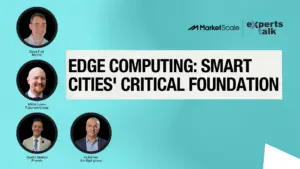Increased Trust in Safety and Easy Implementation Can Help Increase IoT Use Cases in the U.S.
Even as the Internet of Things (IoT) and IoT use cases weaves its way into the fabric of our daily lives, public trust remains a major roadblock in its widespread adoption. With the National Institute of Standards and Technology (NIST) trying to explore safer IoT strategies, there may be a way around this roadblock however.
Technological advancements, especially in connectivity and implementation, have matured significantly. Yet people are apprehensive. It’s not just about whether your IoT in the home will work seamlessly; it’s about whether a third party can access your personal network without your knowledge, or worse, whether a locked account could cause another exponentially serious problem.
As IoT continues to become present in various sectors they can revolutionize traditionally expensive systems. But no matter how foolproof the technology may seem, the human factor can’t be ignored. Whether it’s educating the public on network security or ensuring transparent manufacturing practices, the pathway to the future of IoT use cases isn’t just about better gadgets—it’s about building trust. And for that, both policy and public awareness need to play catch-up with technology.
Yifei Ren has extensive expertise in this conversation. He is a Lecturer and Research Fellow at the Cisco Curtain Centre for Networks at Curtin University. Ren’s insights are shaped by his rigorous academic research and hands-on experience in network technologies, offering a nuanced perspective on the challenges and opportunities that IoT presents and creating more IoT use cases.
Ren’s Thoughts on IoT Use Cases
On Educating the Public about IoT
“Well, first thing that stands out for me is those eight pillars they have summarized. In my opinion, it’s spot on, it’s very accurate. However, I do some disagree with the others. In my opinion, I think the connectivity and ease of implementation is pretty much very mature.”
“In the early stages, very few people do use it. And they’re going to be very high professional people. But when the IoT goes out, everyone already knows the internet. But the internet already gave them a perspective it could be dangerous. So when you have a lot of devices connected to the internet, people are starting to fear. So I think there should be strategy to input to educate the common people, let them know, OK, yes, network could be dangerous, but there are many ways you can protect yourself and explain how actually the product works in terms of different mutual protocols so they understand, OK.”
On Trust and Security Issues
“For example, actually in U.S., you already had a nationwide IoT network, Amazon Dream Network. But it has an issue with the trust, because user didn’t know actually their dream device is a mesh network. Their neighbors can’t go through their device to the internet. It does raise concerns.”
“And also I heard the news somebody got locked off their house because their Amazon account got blocked. So they no longer can get in. So yeah, trust is definitely the number one.”
On Connectivity and Implementation of IoT Use Cases
“But for the connectivity and ease of implementation, I don’t think there shouldn’t be too much work to be done in this area at this stage. Because like Zigbee, LoRa, the new standard for Wi-Fi for long range is pretty mature. And there are very existing off-the-shelf products you can use for your development, for your IoT device.”
On Human Factors in IoT Adoption
“I think the existing strategy they have on there is very good. But I think there is one factor is not considered. It’s the human factor. Even we have a good strategy in terms of like technical or policy perspective, we still have to understand, well, there is a like natural fear from like users.”
On Industrial Applications of IoT
“I would say the manufacturer, because if you look at the manufacturer, the SCADA system they are using at the moment, the sensors, the PLC is not too much different compared to regular IoT device and the microcontrollers. However, if you look at the price for the offering, those companies can have is, I have to say, ridiculously high.”
“So if we can push out IoT into those fields, basically by converting regular IoT device to be able to stand the industrial environment, it’s not only better, most of the microcontrollers nowadays has much more higher performance compared to a regular PLC, and it’s much more cheaper.”
“And the cheaper, we are talking about like 20 times, 30 times difference compared to a regular PLC, which costs like 6,000 USD. But the microcontroller can grab like similar performance for maybe 20 USD.”
“That’s just a huge difference. And that definitely gonna make, and also another benefit is when you bring the regular IoT device into the manufacturer, the protocols, the technology they’re using is more open, not like the priority from like Siemens, all those like Rockwell, all those companies, it’s very priority.”
“So it’s actually introduced a lot of difficulty for us to push into industrial 4.0, because in order to get a different data, you have to do a lot of integration to the existing priority software, which is quite difficult.”







